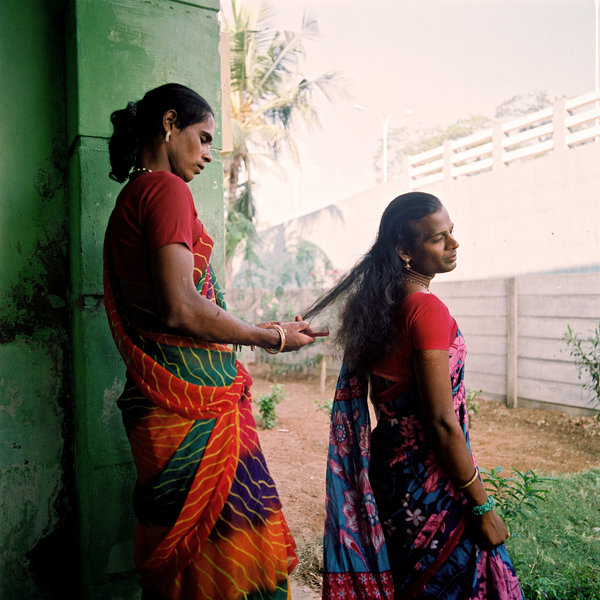DEVANAMPATTINAM/India — The transformation of transgender women into goddesses for an annual Hindu festival takes place in an atmosphere of reverent, somber concentration. Laugh lines vanish, replaced by an impassive mask. Skin becomes stone.
As they prepared to perform in the Mayana Kollai festival in a fishing village in the southern Indian state of Tamil Nadu, some of the dancers slipped into trances so deep it appeared they might have fainted. The photographs, taken over the past three years, are by Candace Feit.
Indians who decide to live as kothis — also known as hijras, kinnars or aravani, depending on the region — are born male and typically have male lovers.
Unlike transgender people in the West, they leave a conservative mainstream culture for an equally conservative subculture. Some live in communes with a strict network of rules under the authority of leaders they refer to as “mothers” and “grandmothers.”
Others live with their parents or head heterosexual families. Many reveal their identities as teenagers and are met with years of taunts, beatings and forced sex.
But during the festival, which takes place in either February or March each year, these troubles are impossibly distant. Any trace of human expression is lifted, and the kothis begin to resemble the deities they worship. The ordinary is tethered to the divine. — ELLEN BARRY
The kothi performers were solemn as the festival approached. They had agreed not to drink alcohol or have sex for the duration of the 10-day festival. Men are not allowed in the dressing room for the preparations, which take place in hushed silence.
Photo
The performers crowd into a small room near the temple to apply makeup, a process that can take as long as two hours. By the time they finish, their faces have disappeared beneath a shell of color — half-person, half-goddess.
Photo
For those 10 days, the kothis are treated with reverence by the villagers, who flock to see them dance without any mention of their gender identity. Walking the town’s streets, the kothis are invited into house after house to give blessings.
Photo
Kavia Varshini, a traditional Indian dancer, is a celebrity in this part of Tamil Nadu. When she walks through crowds after a performance, people rush to her side to have their picture taken. She is one of the lucky ones: There is no family expectation that she will marry.
Mogana, left, helps Navali put on her bra, as the two prepare to perform.
As kothis converge on the village, rivalries can flare. Many gave the cold shoulder to a kothi one year because her name was the only one mentioned in the event’s printed program, which was seen as self-aggrandizing.
Photo
Mogana, shown helping another kothi prepare, is under intense pressure from her family to marry soon. Along with her partner, she is trying to figure out what to do. While the idea of marrying or having sex with a woman is alien to her, marriage would offer the comfort of family acceptance.
Photo
At the end of the festival, their moment over, the kothis return to ordinary life. Jehada Guru, shown here as the goddess Amman, is one of the poorest people in his village: a day laborer and father of two, married to a woman who works in a bakery.
Copy : http://www.nytimes.com/








